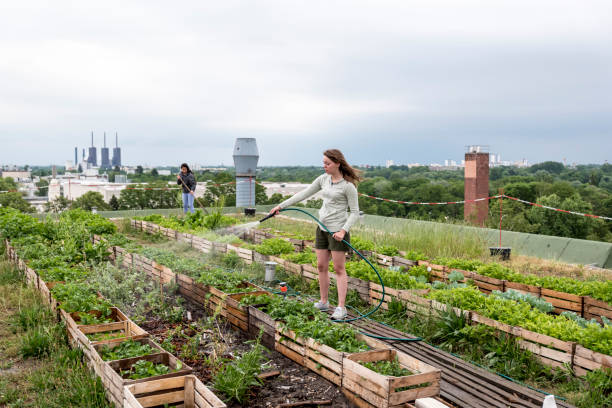The Quiet Revolution of Urban Farming Collectives
Urban farming collectives are reshaping the social fabric of cities, fostering community bonds and redefining our relationship with food. These grassroots initiatives are not just about growing vegetables; they're cultivating a new urban culture. From rooftop gardens to reclaimed lots, urban farmers are sowing seeds of change in concrete jungles worldwide. Read below to explore how this movement is transforming urban landscapes and social dynamics.

Historical Context and Evolution
Urban farming is not a new concept. During World War II, Victory Gardens emerged as a way for civilians to support the war effort by growing their own food. In the 1970s, community gardens gained popularity as a response to urban decay and food deserts. Today’s urban farming collectives, however, represent a more holistic approach to urban living and community building.
The modern movement gained momentum in the early 2000s, driven by concerns over food quality, environmental sustainability, and a desire for stronger community ties. Unlike earlier iterations, today’s collectives often incorporate advanced technologies like vertical farming and hydroponics, allowing for greater yields in smaller spaces.
Social Implications and Community Building
Urban farming collectives serve as powerful catalysts for social change. They create spaces where people from diverse backgrounds can come together, share knowledge, and work towards a common goal. This fosters a sense of belonging and mutual support that is often lacking in urban environments.
Research has shown that participation in these collectives can lead to improved mental health, reduced stress levels, and increased social capital among members. Moreover, they provide opportunities for intergenerational learning and cultural exchange, as experienced gardeners share their knowledge with newcomers and traditional growing practices are integrated with modern techniques.
Environmental Impact and Sustainable Urban Development
Beyond their social benefits, urban farming collectives play a crucial role in promoting sustainable urban development. They contribute to the greening of cities, help reduce urban heat island effects, and support biodiversity by creating habitats for pollinators and other wildlife.
These initiatives also address food security concerns by providing fresh, locally grown produce to communities that may otherwise have limited access to healthy food options. By shortening the distance between farm and table, they reduce carbon emissions associated with food transportation and storage.
Economic Empowerment and Food Justice
Urban farming collectives are increasingly recognized as tools for economic empowerment and food justice. In many cities, these initiatives provide job training and employment opportunities, particularly for marginalized communities. Some collectives have evolved into social enterprises, selling their produce to local restaurants and markets, thereby creating a sustainable economic model.
Furthermore, by increasing access to fresh, affordable produce in underserved areas, these collectives address issues of food inequality and contribute to improved nutrition outcomes in urban populations. This aspect of the movement aligns with broader efforts to combat food deserts and promote equitable access to healthy food options.
Challenges and Future Prospects
Despite their many benefits, urban farming collectives face significant challenges. Land access remains a primary concern, with many collectives operating on temporary leases or occupying spaces under threat of development. Securing long-term land rights is crucial for the sustainability of these initiatives.
Another challenge is navigating complex urban regulations and zoning laws, which often weren’t designed with urban agriculture in mind. However, as the movement gains recognition, many cities are adapting their policies to accommodate and even encourage urban farming practices.
Looking to the future, the potential for urban farming collectives to play a larger role in urban food systems is significant. As cities grapple with issues of sustainability, resilience, and community wellbeing, these grassroots initiatives offer a model for local, community-driven solutions.
Technological advancements are also expanding the possibilities for urban agriculture. Innovations in vertical farming, aquaponics, and controlled environment agriculture are allowing for year-round production and higher yields in urban settings. These developments could see urban farming collectives evolve into significant contributors to urban food security.
Conclusion
Urban farming collectives represent a quiet revolution in how we think about cities, food, and community. By transforming unused spaces into productive gardens, these initiatives are not just growing food; they’re cultivating stronger, more resilient communities. As the movement continues to evolve, it holds the promise of greener, more socially connected, and food-secure urban futures.
The success of urban farming collectives demonstrates the power of grassroots action in addressing complex urban challenges. As cities around the world seek sustainable solutions to issues of food security, social cohesion, and environmental sustainability, the model provided by these collectives offers valuable insights and inspiration.
In an increasingly urbanized world, the growth of urban farming collectives signals a shift towards more participatory, community-driven approaches to city living. It’s a movement that reconnects people with the land, with their food, and with each other, offering a glimpse of what more sustainable and socially vibrant urban futures might look like.





